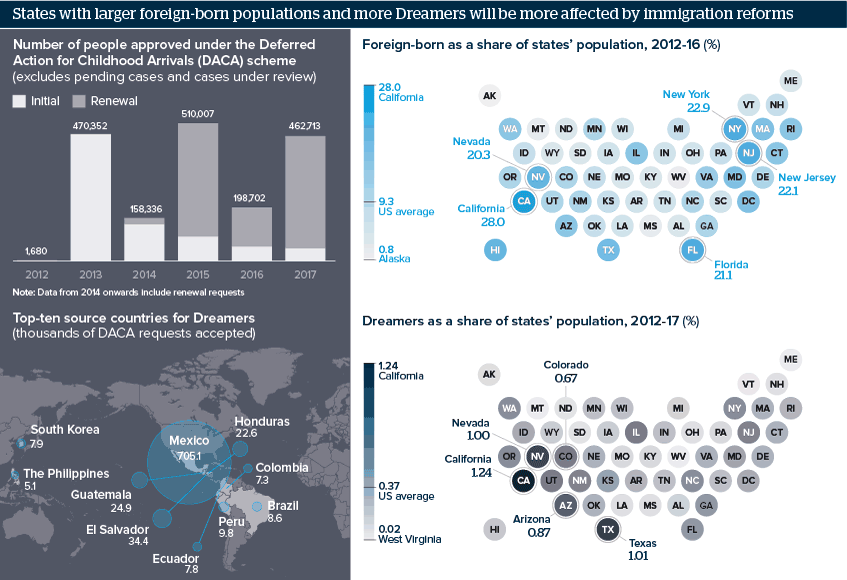US immigration reforms imply fiscal and economic risks
The immigration reform and fiscal debates are fused; making progress means hard-fought political battles
Source: US government; Migration Policy Institute; media reporting; Oxford Analytica
Outlook
President Donald Trump wants to curtail illegal immigration and tighten legal migration, making it more “merit-based”. In 2017, an estimated 11 million people were in the country illegally. Doing so means new laws and associated spending measures. Getting these passed by Congress will need Republican and Democratic votes, and neither party agrees with itself or the other about immigration and fiscal reform priorities.
A sticking point is resolving the status of 1.8 million Dreamers, brought illegally to the country as young people. They are in-country under the 2012 Deferred Action for Childhood Arrivals (DACA) scheme. Trump has tried unsuccessfully to cancel DACA and wants a permanent solution in place of it by March 5. Differences between lawmakers make this unlikely.
Impacts
- Large-scale immigrant departures (legal or illegal, voluntary or not) will disrupt local economies and supply chains.
- The coming midterm elections mean lawmakers will be reluctant to make too many concessions in any DACA deal.
- The Mexico-US border wall policy will cause further rifts between the Mexican and US governments.
- Cancelling Temporary Protected Status will see US outmigration, such as back to Haiti; receiving countries’ capacities will be strained.
See also
- US shutdown deal by February 15 is possible - Jan 29, 2019
- Prospects for US politics to end-2018 - Jun 14, 2018
- US House leaders have immigration advantage, for now - Jun 13, 2018
- US immigration and farm law spats are ahead - May 29, 2018
- Ryan exit will hit US Republicans - Apr 12, 2018
- US governor races will shape Trump’s policy agenda - Apr 10, 2018
- US-Mexico border militarisation is unlikely - Apr 5, 2018
- US census row reignites immigration debate - Mar 27, 2018
- Restricting immigration will lower US GDP - Jan 17, 2018
- More graphic analysis
